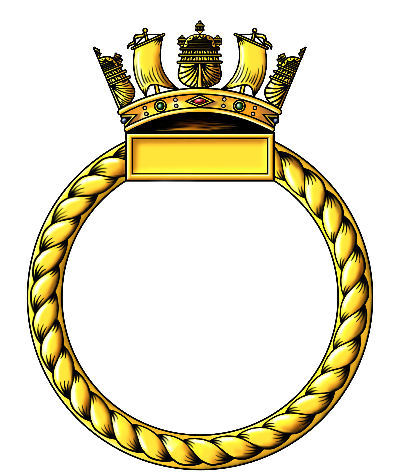R.N. Auxiliary Hospital

No badge issued for this establishment
Location
Mombasa, Kenya
Commanding Officers
Surgeon Captain (H) A. W. McRorie, MD, ChB, DPH
Related items
R.N. Auxiliary Hospital Durban
Reminiscences
None
Gallery
None
R.N.A.H. Mombasa
Establishment of a Naval Auxiliary Hospital
With the outbreak of war with Japan and the fall of Hong Kong on Christmas Day 1941 and Singapore on February 15th 1942 the Japanese were expected to turn towards Ceylon and India next. They made their move on Easter Sunday 1942, April 5th, when Japanese carrier based aircraft carried out an air raid on Colombo, Ceylon; their objective was to destroy the British Eastern Fleet in harbour. Forewarned by intelligence reports the fleet had been dispersed but the fact that the enemy had struck their home base demonstrated Ceylon's vulnerability forcing the Commander in Chief, Eastern Fleet, to relocate its main base to Mombasa, East Africa, from where his Capital ships, the “R” class battleships (RESOLUTION, RAMILLIES, REVENGE, ROYAL SOVEREIGN) could be deployed into the central and eastern Indian Oceans.
This new emphasis on basing the Fleet on East Africa highlighted the inadequacies of shore based hospital facilities to accept any significant number of casualties or sick personnel aboard ships of the fleet. Prior to the Fleet’s relocation medical services in Mombasa were provided by establishing an R.N. Sick Quarters in Mombasa under the charge of acting Surg. Lt. Cdr P. C. Barkla, MB, ChB, LRCP and staffed by 2 Surg. Lieutenants and a Superintend Sister. Sick bays were opened in various naval shore establishments in the area including H.M. Dockyard. Mombasa.
R.N. Sick Quarters, Mombasa comprised of a number of 'banda' type buildings, huts thatched with banana leaves, and with walls of sacking stretched over a wooden frame and treated with cement. Sanitation was fairly primitive. Nursing sisters employed here gained great experience in tropical medicine, and 75 percent of the cases which they nursed consisted of sub-tertian malaria and amoebic and bacillary dysentery. Building work began straightaway to enlarge the Sick Quarters into a small Auxiliary Hospital with accommodation for 100 patients.
In addition to completing the new Auxiliary Hospital arrangements were made for R.N. Hospital Ships to be moored in Kilindini harbour to act as a Base Hospital Ship. These ships could accommodate 300+ patients and were fully equipped with an operating theatre, X-Ray department and laboratory and could offer isolation wards for for patients with tropical disease as well as treating less serious cases as out patients. The first to arrive on station was the H.M. Hospital Ship VITA on June 10th 1942. She was relieved by H.M. Hospital Ship VASNA on July 16th and after embarking a full complement of invalids for passage she sailed for Durban on July 22nd.
The Royal Naval Auxiliary Hospital, Mombasa, was established on August 1st 1942 with valuable assistance in the supply of medical stores and equipment given by the Army until the opening of a Naval Medical Stores Depot in the charge of a Superintending Pharmacist. The new R.N.A.H was commanded by Surgeon Captain (H) A. W. McRorie, MD, BCh, DPH, who also held the post of Fleet Medical Officer, Eastern Fleet. He had a staff of 3 Surg. Lieutenants RNVR, 1 Supervising Sister, 3 Reserve Nursing Sisters, and 1 Senior Pharmacist plus a small number of nursing sisters and male Sick berth Assistants. Soon after a second Surgeon Captain, Surg. Capt. J. Wylie, OBE, MB, ChB was appointed to the hospital as Principal Medical Officer, H.M. Naval Base, Kilindini.
VASNA remained at Kilindini as the Base Hospital Ship until November 19th 1942 being relieved by VITA which arrived back at Mombasa on November 16th to resume Base Hospital Ship and Fleet duties. She was to remain stationed at Mombasa until February 8th 1943. Her place was taken by the Dutch Hospital Ship TJITJALENGKA which arrived at Kilindini on March 18th 1943 as the Base Hospital Ship; she remained on station until September 18th 1943.
The need for Mombasa as the base of operations for the displaced East Indies Fleet had passed by the Autumn of 1943; during August the aging Battleships based at Kilindini were withdrawn from the Fleet and returned to the UK, the Commander in Chief ‘s Headquarters, including Surgeon Captain McRorie, were transferred from Kilindini back to Colombo during September. Surgeon Captain Wylie was now as officer commanding R.N.A.H. Mombasa and Principal Medical Officer, H.M. Naval Base, Kilindini. Kilindini was still an important base, home to the vessels of the Kilindini Escort Force, mainly Corvettes and Sloops.
The next ship to arrive for duty as the Base Hospital Ship was H.M. Hospital Ship OPHIR which arrived at Kilindini on October 8th 1943, she sailed with a full complement of invalids for passage to R.N. Auxiliary Hospital Durban on New Year’s Day 1944. With her departure Hospital Ship support for Kilindini/Mombasa came to an end.
R.N.A.H. Mombasa appears to have been colosed sometime in late 1945, personnel are listed in the Navy List for October 1945 but the entry for the hospital has been removed in the next issue, April 1946.
Last modified: 15 September 2023
Primary information sources
Additional sources:
(1954) Surgeon Commander J. L. S. COULTER, D.S.C., R.N., ‘THE ROYAL NAVAL MEDICAL SERVICE’ London, Her Majesty's Stationery Office - Volume 1'Administraion'
Comments (0)